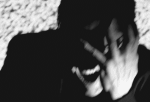When I criticized the conclusion of “The Leftovers” TV show I relied on my own alternate theory and on the fact that the official explanation was instead brittle to the point of being objectively unacceptable.
So, in my mind I groped around to explain this concept. I knew what I meant, but I struggled to manifest it. Today, I found out that there’s a scientific concept that is built exactly on that idea. So I can finally explain concretely what I meant with a more universal evidence.
For me the show already went past a threshold and reached a breaking point with episode three of the very first season. There was something in that episode that was like a statement, a line being drawn on the ground that wouldn’t have allowed going back anymore. No matter how many more episodes and seasons there were going to be. Now I know that breaking point isn’t just an abstract, subjective idea, but a well known scientific concept that is instead quite concrete.
The thesis the finale completely relies on is that what is being shown has to remain “ambiguous”. That means that even the weirdest events that you see always have a “scientific” explanation and a more magical one. The whole show thrives on that ambiguity, keeping both paths open and never explicitly choosing one.
But as I said, I think instead that the show made a crucial mistake already at episode three. That means that instead of remaining ambiguous, the show actually made a “statement”, by showing something that I consider unambiguously impossible. That is: episode three shows something that can ONLY have a magical explanation. Hence, that episode codifies the rest of the show as something that only appears as ambiguous, but that has instead one solution only. Like a collapse of the wave function: those two superpositions collapsed into one, already with episode three.
What’s this breaking point about? It’s all about reverend Matt winning at the casino after following the will of the god. The show simply wants us to accept that outcome as a statistical but still plausible anomaly. But it is not. In my head this event was already way past the threshold of ambiguity because it was a lot more than an anomaly.
One thing is to consider the “anomaly” of red three times in a row related to the totality of the games happening in that casino. In this case “three times red” is going to happen relatively often. It’s far from impossible. But if a specific person “decides” at a specific moment that red is coming out three times in a row, and this does indeed happen right at that moment, then in my mind this statistical event is shot way beyond what can be considered plausible, and right into a magical realm. Because we aren’t more seeing an anomaly that is made possible by a large sample, it’s instead an anomaly right when it’s “desired”. That’s the threshold.
Today I found out there’s a scientific concepts to determine exactly that: a way to scientifically decide when en event just cannot have a rational explanation (to simplify):
p-value
I’m not an expert of that stuff, so I don’t know if my thesis is actually right. But now I know that it is possible to study that episode to determine if it’s actually true that Matt winning three time at that precise moment constitutes something that goes under the p-value. It can be objectively measured.
The concept of p-value works even in reverse: if we know the system isn’t rigged, and the result goes below the p-value, then it means that something “magical” happened (a relationship between the god and the winning). That there was an interference. That in this case is obvious: the writers of the show intruded in the fabric of that dimension. So, either you consider that as a “writing mistake”, or, as I did, a statement that “collapses the wave function”. That makes The Leftovers come out of its ambiguity and take one path explicitly.
I might be right, I might be wrong. But it can be calculated.
(p-value also needs more contextual evidence, if you read carefully, and the show provides plenty of it, even if you could ideally write that out as “poetic license”. The contextual evidence is that the number “3” is echoed explicitly through the whole episode. Providing more and more statistical anomalies that would contribute lowering the p-value.)

